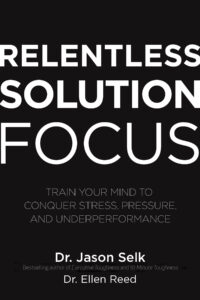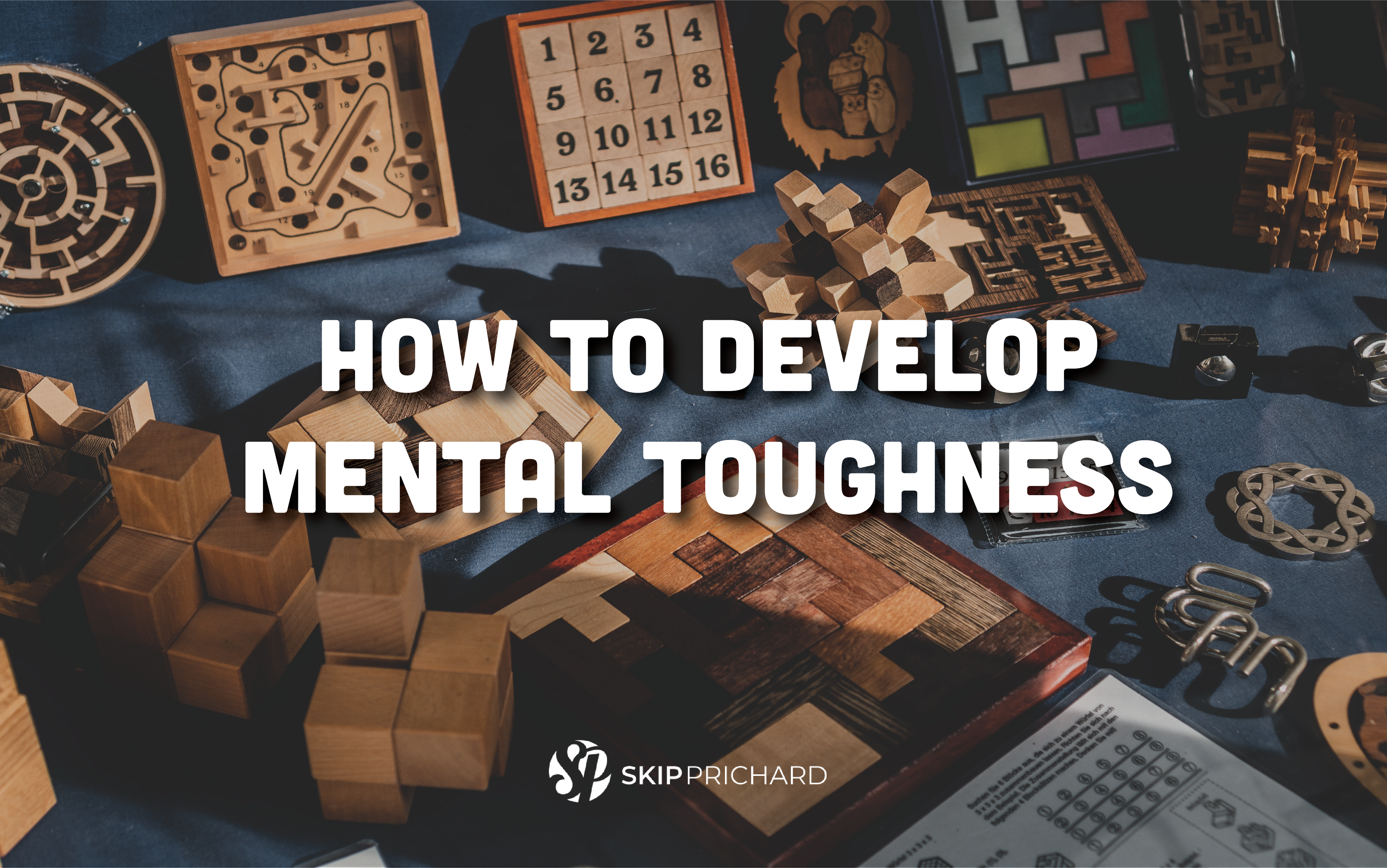Train Your Mind
Dr. Jason Selk is a mental toughness expert who has not only worked with athletes in Major League Baseball and the National Football League, but he has also advised executives on achieving success in both their personal and business lives.
While serving as the Director of Mental Training for the St Louis Cardinals, Jason helped the team win their first World Series in over 20 years, and in 2011 he assisted the Cardinals in the historic feat of winning their second World Championship in a six-year period.
Jason’s process, which is based on neuroscience, research, and his work with clients, trains the brain to focus on solutions instead of problems. In his book Relentless Solution Focus: Train Your Mind to Conquer Stress, Pressure, And Underperformance, he delineates his process so that anyone can achieve mental toughness and gain control over their thoughts, emotions, and performance. After reading his book, I asked him to share more insights.
What is mental toughness and how can leaders develop it?
Mental toughness is the ability to stay focused on solutions, especially in the face of adversity. After years of studying highly successful individuals, the quality I observed in them that allows them to achieve such greatness is their ability to keep their focus on solutions, rather than the normal problem-centric way of thinking. While some (very few) people are born with this mental toughness, the rest of us can learn it. You can train your brain to develop mental toughness just like you can train your body to become stronger. Relentless Solution Focus is a process I developed that is a concrete method of training mental toughness.
Relentless Solution Focus (RSF) is a three-step process. The first is “recognize,” and it teaches us to be aware when we move into negative thinking. Are most people simply unaware that it is happening until it is too late?
It is usually fairly easy for us to recognize when other people are focused on the negative or dwelling on problems, but it is much more difficult for us to self-assess. The good news is that we have been given a failsafe cue that screams at us when we have fallen into negative thinking; we just have to learn to recognize what it’s telling us. That cue is negative emotion. Negative emotion was given to us as a gift—the gift of recognition. Our body doesn’t feel anything unless our brain tells it to, and feeling negative emotion (stress, anger, guilt, fear, sadness, worry, etc.) is a sure sign that our brain is focused on a problem.
Second is “replace,” the idea that we need to replace the negative with the positive. You say that the key question is, “What is one thing I can do right now that could make this better?” How have you seen this question reorient people’s thinking?
This question is critical, and it is the tool for redirecting your problem-centric thoughts onto more productive and positive thinking. Telling yourself to just generally be more positive and solution-focused in usually wasted breath. You need a concrete tool. It is important to remember that our brains are designed to focus on problems and shortcomings first—this is referred to as problem-centric thought (PCT). Without a concrete tool to help us break free from PCT, we oftentimes end up in a PCT tornado of negative thinking. The RSF Tool—“What is one thing I can do right now that could make this better?”—immediately shifts your focus onto a potential improvement to your current situation. It keeps your mind from becoming overwhelmed with trying to resolve the entirety of the situation, which often prevents people from even getting to a potential solution. Focusing on one thing that could improve the current situation is the most productive way of working toward results.
People often have negative thoughts. You say that what you do in the first 60 seconds after having one is key. Talk a little about this. Why is the timing so critical?
When our brains are focused on a problem, it sends the signal to our body to release the stress hormone cortisol into our bloodstream. At mild doses, cortisol can be beneficial to our performance, but at even moderate doses, cortisol significantly limits creativity and intelligence, and it causes us to feel like garbage. It is like a low-dose poison coursing through our veins, and, unfortunately, most of us are living with significant levels of this poison on a daily basis. Asking and answering the RSF Tool question within 60 seconds of negative thinking—“What is one thing I can do that could make this better?”—redirects the problem-centric thought before the cortisol release.
I love the concept of the Mental Chalkboard and the divide between the problem side and the solution side. Most people focus on the problem and this expands. Once we learn to cross to the solution side – within 60 seconds – things improve. But it also seems that we are hardwired not to do this, so what strategies can help us do this consistently?
 You are absolutely right that we are hardwired not to do this, so we need to consistently train our brains using the RSF process. This is where the “retrain” step of the process becomes so integral. The Success Log is one of the tools detailed in the book that works to retrain your brain for solution-focused thinking in about one minute per day. The great news is that the training does not require a significant commitment of time, but it does require consistency. When the Success Log is completed at least 3 to 4 days per week, it helps to make solution-focuses thinking the norm. Two of the questions on the Success Log are, “What is one thing I want to improve in the next 24 hours?” and, “What is one thing I can do to help make that improvement?” Asking yourself these questions on a daily basis (or at least three days per week) keeps your brain searching for solutions and improvements, rather than problems.
You are absolutely right that we are hardwired not to do this, so we need to consistently train our brains using the RSF process. This is where the “retrain” step of the process becomes so integral. The Success Log is one of the tools detailed in the book that works to retrain your brain for solution-focused thinking in about one minute per day. The great news is that the training does not require a significant commitment of time, but it does require consistency. When the Success Log is completed at least 3 to 4 days per week, it helps to make solution-focuses thinking the norm. Two of the questions on the Success Log are, “What is one thing I want to improve in the next 24 hours?” and, “What is one thing I can do to help make that improvement?” Asking yourself these questions on a daily basis (or at least three days per week) keeps your brain searching for solutions and improvements, rather than problems.
Talk more about “retrain.” In working with leaders, how long would you say it takes to retrain our minds in this way?
Committing to the training and using the RSF Tool question yields significant and immediate results. Like anything, the more consistently you work at it, the more consistent the results. There is not an endpoint to developing mental toughness and a Relentless Solution Focus. It is something that requires consistent training, but the training in total takes less than three minutes per day.
I love your chapter on “perfection to performance” and the advice to “stop the self-inflicted beatings.” This must be more common than I thought. Do you see this as sabotaging progress?
Absolutely. It is completely normal to do 99 things right in a day, and one thing less than perfect, and at the end of the day, you focus on that one imperfection. We have a tendency to be quick to dismiss our successes and strengths, and really zero in on our mistakes and shortcomings. Expectancy theory is a theory in psychology that is the basis for most of the work I do. Expectancy theory states “that which you focus on expands.” When we focus on our shortcomings and mistakes, our shortcomings become more prevalent. But when we focus on improvements and solutions, those become more prevalent. Relentless Solution Focus puts you back in control by redirecting your thoughts onto what is much more productive for success and happiness.
For more information, see Relentless Solution Focus: Train Your Mind to Conquer Stress, Pressure, And Underperformance.
Image Credit: Jonathan Kemper

